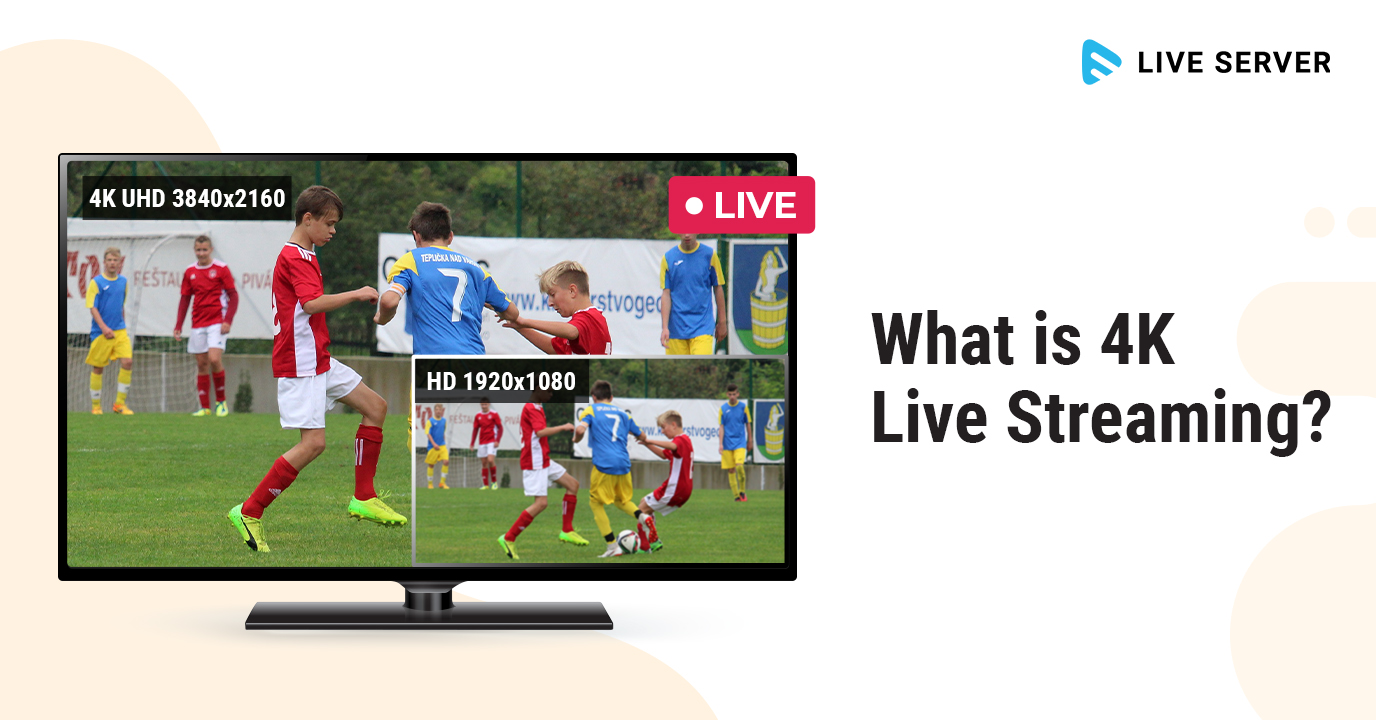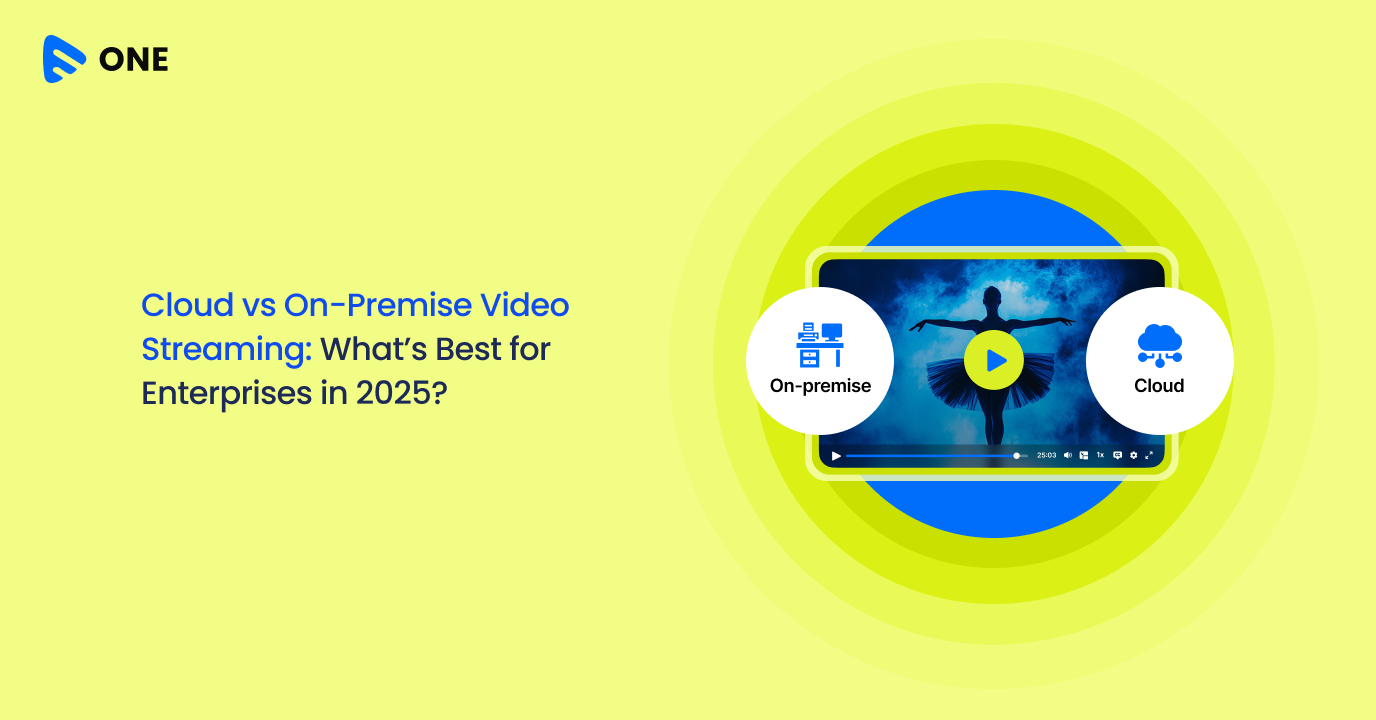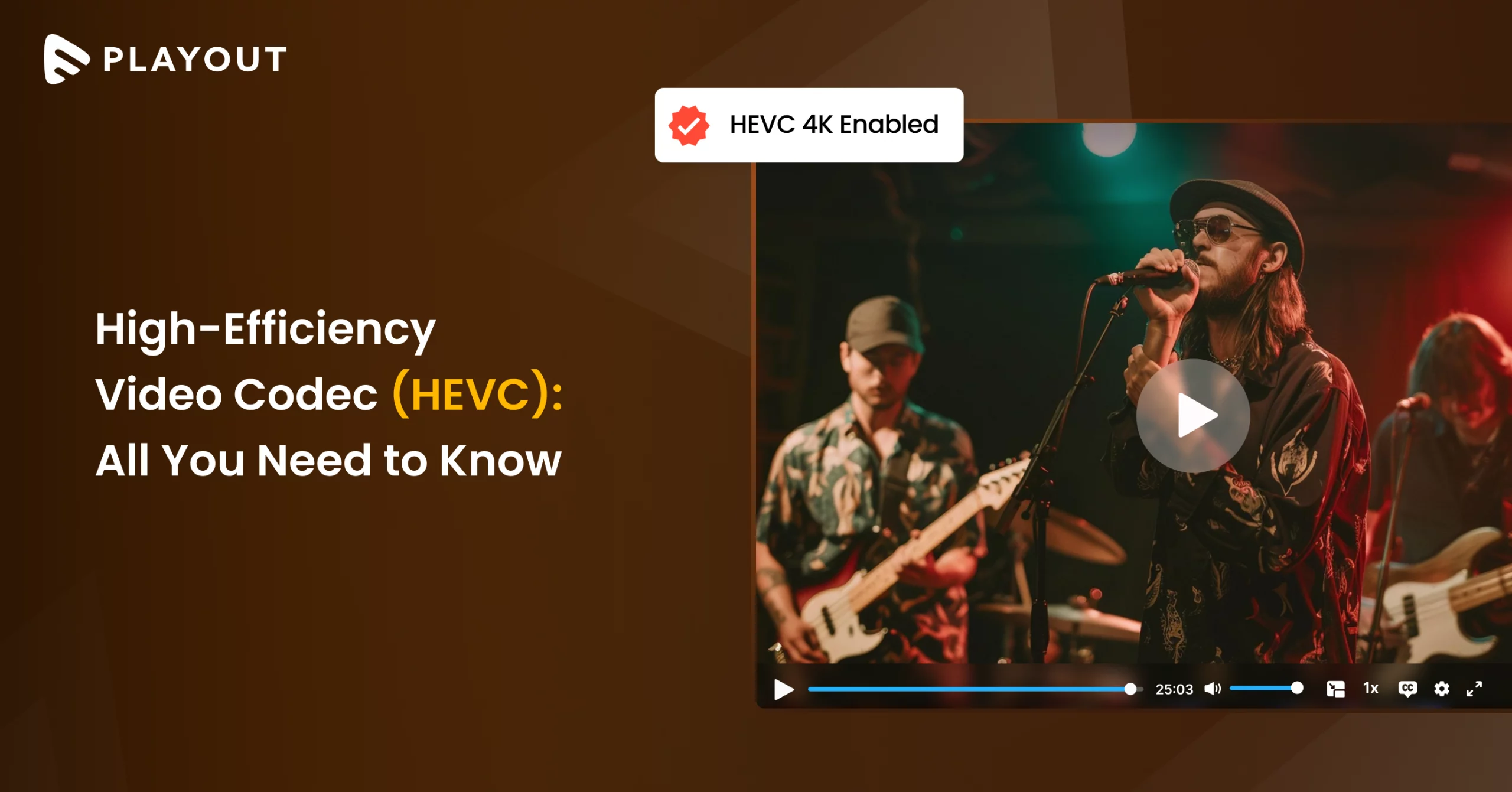One of the key aspects of delivering a good quality video is understanding and determining the correct video resolution of a live stream. Alongside frame rate, it’s the top-most feature to keep in mind to determine video quality. Nowadays, the term ‘4K’ isn’t just a buzzword. It has emerged as a new quality of video that will soon become a standard for any TV, computer, or camera. In this blog, we will be elaborating on what 4K live streaming means and how to achieve it.
Why does Video Resolution matter?
Although various factors affect the quality of video streaming like frame rate, compression processes etc, video resolution is the most basic and most dominating parameter because it reflects the detail of the frames of the video.
Resolution greatly influences the viewing experience, particularly when the video is played on large screens. As a content creator, you should start caring about video resolutions if you want your on-demand video or live streams to reach a wider audience.
For more details on video resolutions, read our blog SD, HD and 4K – Streaming Video Resolutions Explained.
What is ‘i’ and ‘p’ in Video Resolution?
We often come across the letters ‘i’ and ‘p’ after the numbers 720, 1080 and so on. These letters refer to the method in which the video has been recorded where ‘i’ stands for ‘interlaced’ and ‘p’ stands for ‘progressive’ or ‘non-interlaced’.
Interlacing video is a technique for doubling the perceived frame rate of a video display without consuming extra bandwidth. As opposed to interlacing, progressive scanning is a technique of displaying or transmitting moving images in which all the lines of each frame are drawn in sequence, without alteration. Progressive method delivers a better resolution in general, as the motion appears more fluid.
What is 4K?
4K refers to a video resolution of 2160 X 3840 pixels, but by ‘4K’ we refer not to the height of the pixels but the width of the pixels (3840p from which the name ‘4K’ is derived).
There are two variants of 4K:
- 3840 x 2160 pixels (mostly used by TV broadcasters, and online media channels like YouTube)
- 4096 x 2160 pixels (mostly used in the movie projection industry)
Many TV broadcasters, streaming platforms and cinema projecting companies have adopted this definition already, but 4K-capable viewing devices are not yet used on a large scale. However, Ultra HD in all its variants is expected to be the new standard in the next 10 years, just as HD is the most popular format now.
Encoding and Transcoding
Getting your 4K live video feed into your platform of choice will require an encoder. Encoder and transcoder is a must for 4K live streaming. While an encoder (both software or hardware) compresses your video file and converts your raw file into digital format, a transcoder converts the online video files into different resolutions for lower internet speed and screen sizes ensuring compatible streaming of videos without any interruption.
There are two types of encoders: a physical hardware encoder and a software encoder. A hardware encoder is a physical device that captures, compresses, and converts audio-visual data into a format suitable for streaming and/or recording. For those who are just starting, hardware encoders are not one of the most affordable options.
Software encoders are programs that can be installed on your system, and they are mostly affordable. It’s suitable for beginners eager to try them out before committing too much money on a streaming setup. Easy to use, you can upgrade them by simply downloading new and improved versions. They require less time to set up, and you can tweak or change most aspects of the codecs to get the bitrate and video quality you desire. You can find more details about the encoding process in our blog Cloud Video Encoding vs On-Premise: Pros, Cons and Beyond.
Is it Possible to Encode Such High-Resolution Videos?
Well, the answer is not that simple. In order to encode high-resolution content, you need to keep in mind that content quality is affected by resolution, frame rate, and bit rate. Higher the resolution, frame rate and bit rate, the more work your encoder will have to do. Your choice of encoder hardware or software may limit your ability to provide the highest-quality video content.
We would suggest to opt for a streaming service provider like Muvi Live that is cloud-transcoding enabled, allowing your viewers to have a smooth playback experience using adaptive streaming. If you don’t opt for one, your encoder will need to do even more work to provide all the playback levels in parallel. For example, to live stream a 1080p broadcast, you would have to encode at 1080p, 720p, 480p, 360p, and maybe more.
Muvi Live encodes high-resolution videos in the cloud and and supports various video formats including MP4, MOV, MKV, FLV, VOB, M4V, AVI, 3GP, WMV, MPG, etc, thereby streamlining encoding multi-format & multi-device content and curbing bandwidth consumption while ensuring a superior user experience.
How can Muvi Live Help?
If you are looking for a stable and secure live streaming server that can encode 4K videos, choose Muvi Live. It automatically converts the resolution / bitrate into 4K, 2K, 1080, 720, 640, 480, 360, 240, 144 formats and components needed for high dynamic range (HDR) video delivering higher resolution videos with greater color representation.
Not only that, Muvi Live lets you stream high-quality live video with 10 seconds latency or less. With adaptive multi-bitrate streaming, your users unlock a lag-free viewing experience that is auto-scalable during peak periods.
Interested in checking out Muvi Live? Try our 14-Day Free Trial!















Add your comment